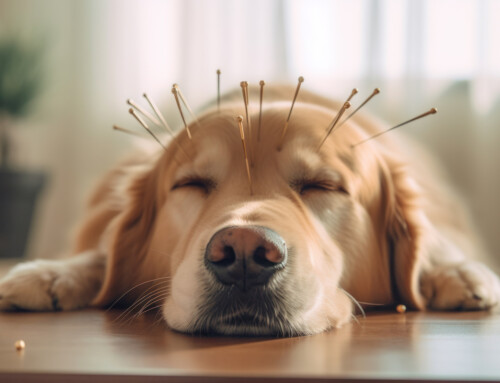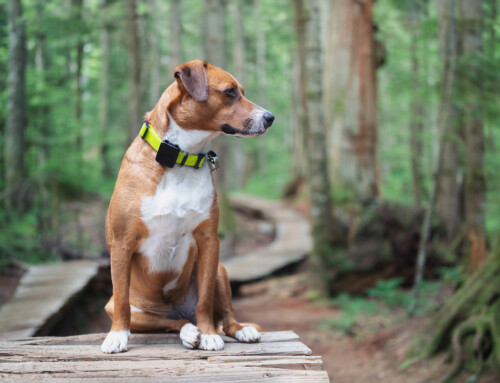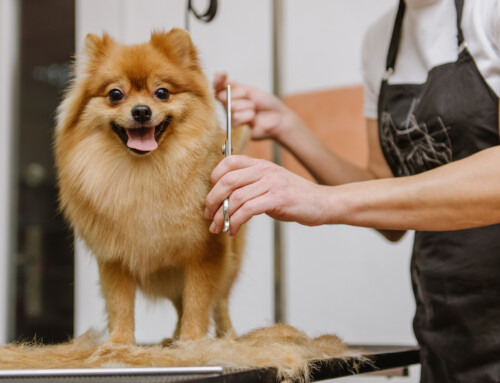Proper dental care is an important part of keeping your pet healthy. Healthy teeth and gums are essential to maintaining a happy, healthy pet and reducing the risk of future medical issues.
According to the American Veterinary Dental Society (AVDS), 80% of cats and dogs will develop dental disease by the time they are three years old. Unchecked, these conditions can worsen and lead to serious health problems.
Below, you’ll find everything you need to know about pet dental care. From here, you can keep your furry friend happy and healthy for many years to come.
What is Pet Dental Care?
Plaque is a natural bacteria that is is present in all mouths. It’s soft, colorless and easily removed from teeth. However, if ignored, plaque hardens into tartar. This can irritate gums and must be scraped away with dental instruments.
Pet dental care is the process of removing plaque and tartar build up on your pets teeth, which helps to prevent the development of dental disease. This can be achieved by brushing your pet’s teeth regularly, feeding them a special dental diet, and visiting your vet for dental exams.
Why is Dental Care So Important for Your Pet?
Without proper dental care, your pet can develop dental disease such as periodontitis, gingevitis and tooth decay. Bacteria can cause serious damage to your pet’s teeth and gums. This can lead to expensive medical bills and possibly the need for surgery. Oral bacteria and infection could even spread throughout the rest of your pet’s body causing heart disease, kidney disease and diabetes. This can be lethal.
Types of Dental Care For Your Pet
Now that you understand why dental care is so important for your pet’s health, let’s talk about the 3 best ways to keep your pet’s teeth clean and healthy:
- Brushing your pet’s teeth
- Feeding your pet a special dental diet
- Visiting your vet regularly
1. Brush Your Pet’s Teeth
Gently brushing your pet’s teeth is a great way to get rid of plaque before it builds up. Ideally, you should aim to brush your pet’s teeth twice a day. But if your pet resists, at least try for 3 times a week.
Brushing your pet’s teeth can be a challenge, but it’s an important part of dental care! Be patient and kind, and follow the steps below to help you reach all those hard-to-reach teeth.
- Gather your supplies– choose a toothbrush and toothpaste that is specially designed for pets, you should be able to find a wide selection at your local pet store. A finger brush is a toothbrush with rubber bristles that fits over your finger. This type of brush works well with smaller animals. If you have a larger pet you may have better luck with a handled brush. Never use toothpaste that is meant for humans as it can upset your pet’s stomach.
- Start early– It’s best to begin brushing your pet’s teeth at a young age so they become accustomed to the habit. However, it’s never too late to start! An older pet may need a little more patience but eventually, they will learn to enjoy the experience.
- Choose a time when your pet is calm– It will be difficult to brush your pet’s teeth when they are frisky or excited. Wait until your pet is calm and subdued before attempting to brush.
- Get comfortable– Standing over your pet or attempting to restrain them will only cause them to resist. Try sitting on the floor in front of them and pet them reassuringly.
- Practice makes perfect– It’s unlikely that your pet will let you dive right in. Start by slowly and gently touching their gums with your finger to get them used to the sensation. If your pet resists, stop and try again later. You may have to do this for several days before they are ready for a toothbrush.
- Time to brush– Once your pet is ready to have their teeth brushed, gently lift their lip and brush their teeth at a 45-degree angle to reach the gums. Brush gently in small circles working one section at a time.
- Watch for excessive bleeding– A small amount of blood is normal, especially if you’re new to brushing. But if there’s an excessive amount of bleeding you should consult your vet for advice.
2. Feed Your Pet a Dental Diet
Dental diets consist of specially formulated pet foods designed to reduce plaque from your pets teeth and promote healthy gums. Usually a hard kibble, this type of pet food is designed to crumble into small chunks. They scrape tartar off your pets teeth as they chew. Some even have an added coating to reduce the formation of plaque.
There are many different brands and types of dental diet foods, treats and chews available. The best way to identify them is to look for the Veterinary Oral Health Council seal.
While dental diets can make a great second line of defense when used with regular brushing, you should talk to your vet before using these foods instead of brushing. There are some instances where your pets teeth aren’t able to be brushed. This method is better than nothing, but brushing is always the most effective option.
It’s also important to note that in order to be effective, your pets dental diet food must be the only food that they eat. If you give them table scraps and other non-certifed treats it will defeat the purpose.
3. Visit your vet regularly
Another important way to maintain your pets dental health is to visit your vet at least once a year.
At your annual checkup, your vet may give your pets teeth a glance. But a full dental exam is required to professionally clean their teeth and look for dental problems that you may not notice such as:
- Periodontal disease- a bacterial infection that causes inflammation in your pet’s gums and surrounding tissue.
- Broken teeth or jaw
- Abscesses or infected teeth
- Cysts or tumors
- Teeth misalignment
- Palate defects
At the dental exam your vet will need to sedate or anesthisize your pet in order to take x-rays, deep clean your pets teeth and conduct a comprehensive exam.
Unlike most human dentists, your vet will likely address any problems, such as broken teeth or abscesses, that same day while your pet is already under anesthesia.

Signs of Dental Disease
Dental disease often goes by undetected until it progresses enough to cause symptoms. Watch your pet for these dental warning signs;
- Red, swollen, or bleeding gums
- Fould smelling breath
- Increased drooling
- Lumps or bumps along the gumline
- Whining or dropping food while eating
- Decreased appetite or unexplained weightloss
- Loose or discolored teeth
If you notice any of these these red flags, consult with your vet right away. It’s important to address dental problems before they have a chance to escalate.
Call Main Street Veterinarians for Your Pets Dental Care
Proper dental care is an important part of keeping your pet healthy. Brushing your pet’s teeth, following a dental diet and having regular vet dental cleanings can help prevent the buildup of plaque and tartar on your pet’s teeth. This not only keeps your pet’s teeth clean and healthy but it prevents infections that can spread to the rest of your pet’s body.
If you have questions or concerns about your pets dental health, contact Main Street Veterinarians to schedule an appointment today.








